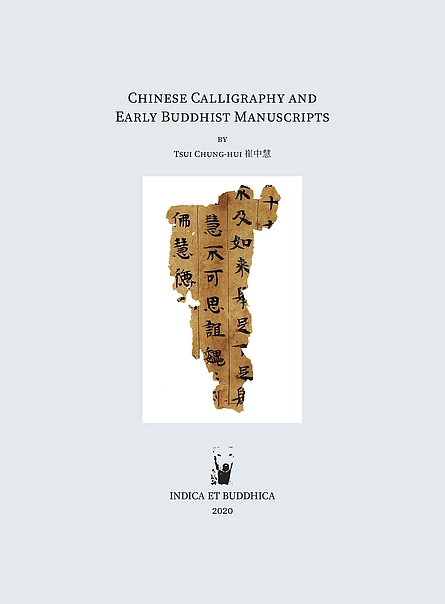Tsui, Chung-hui 崔中慧 (2020) Chinese Calligraphy and Early Buddhist Manuscripts. Oxford: Indica et Buddhica.
Abstract
The earliest extant Chinese Buddhist manuscript the Buddhasaṅgīti-sūtra was excavated at Toyuq in Turfan. It is dated the 6th year of the Yuankang era (296 CE) during the Western Jin Dynasty (266–316 CE). This sūtra is a copy by Zhu Fashou, one of Dharmarakṣa's monk disciples, a distinctive scribe on the translation team. Both historical documentation and archæological findings of the period when Buddhism was initially transmitted into China demonstrate that the copying of Buddhist texts by monk scribes from Central Asia played a key role. The work of these scribes also enhanced the creation of diverse and vigorous calligraphic styles from the 3rd to 5th centuries. However, before the 20th century, early Buddhist scribes or foreign scribes were little known in the history of Chinese calligraphy, or in official records.
The discovery of the Dunhuang and Turfan manuscripts in the early 20th century provided scholars with new material with which to examine early Buddhist scribal culture. This monograph considers the culture of early sacred writing, and the role of early Buddhist scribes, scribal workshops, scriptural calligraphy, and the expertise of these early scribes, for the history of Chinese calligraphers and calligraphy.
Held
- National Library of New Zealand
- University of Cambridge
- Collège de France – Bibliothèque d'études chinoises
- Universität Heidelberg
- Universiteit Gent
- Universiteit Leiden
- Eötvös Loránd Tudományegyetem, ELTE
- National Palace Museum Library, Taipei
- Yangzhou Museum
- The Guyuan Museum of Ningxia
- The Palace Museum, Beijing
- Taitō City Calligraphy Museum, Tokyo
- Gansu Provincial Museum, Lanzhou
- Lüshun Museum, Dalian
- Dunhuang Research Academy
- The University of Hong Kong
Hardcover – ISBN 978-0-473-54010-4
8.5 x 11 in, Colour, Case Laminate, 180pp.
US$229.00 · £169.00 (UK) · €197.00 · $339.00 (NZ)
Softcover – ISBN 978-0-473-54009-8
8.5 x 11 in, Colour, Perfect Bound, 180pp.
US$187.00 · £137.00 (UK) · €159.00 · $269.00 (NZ)
Global distribution – Indica et Buddhica Distributors
PDF – ISBN 978-0-473-54012-8

